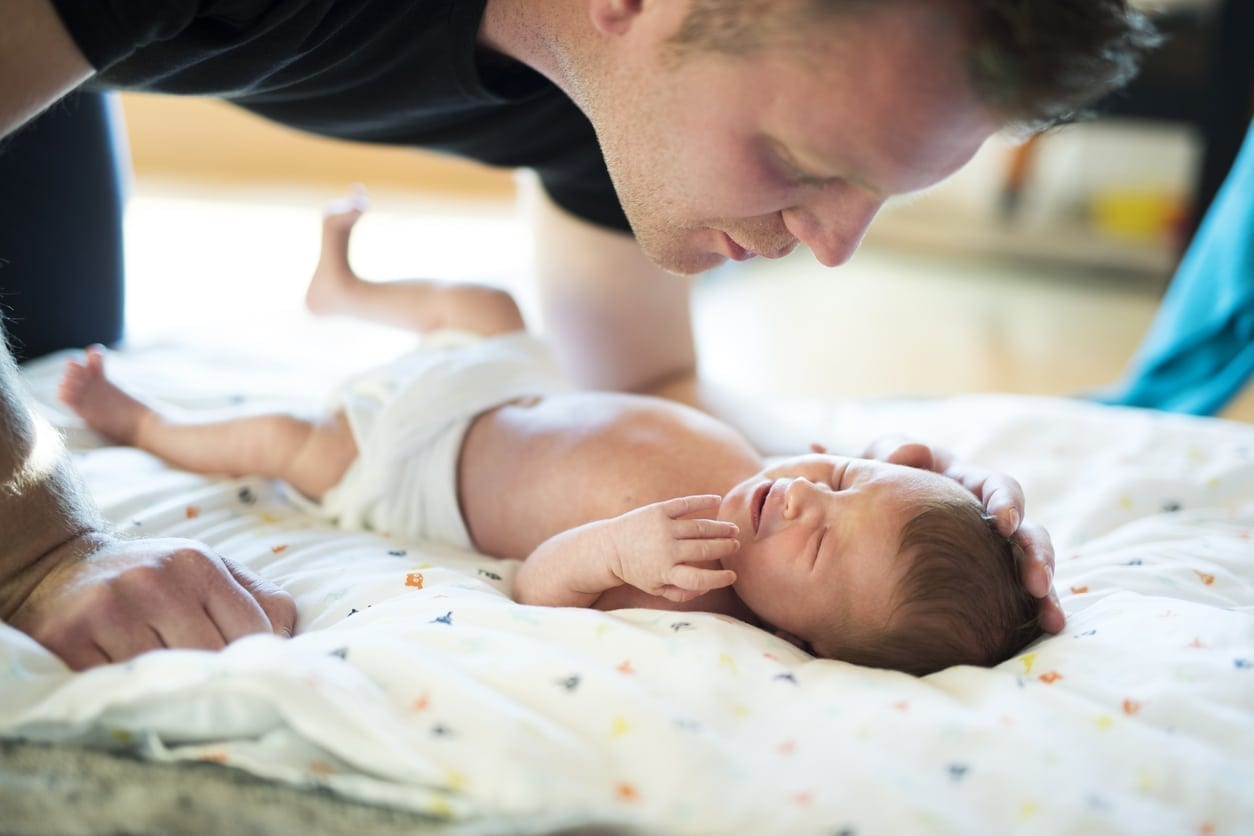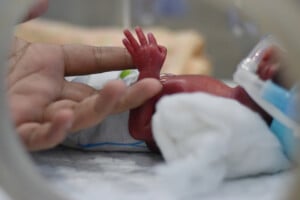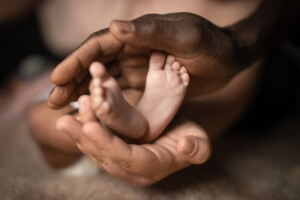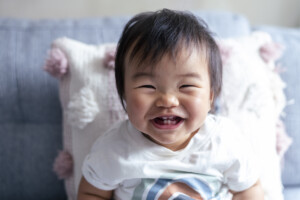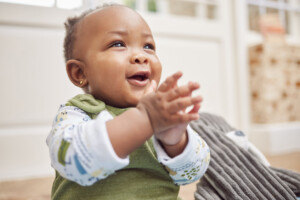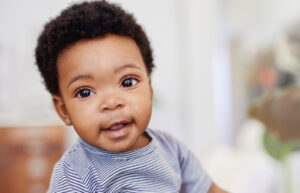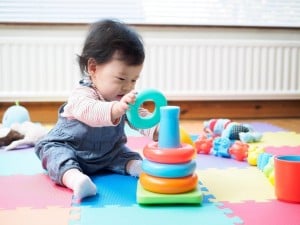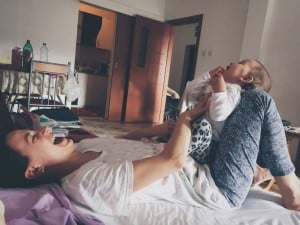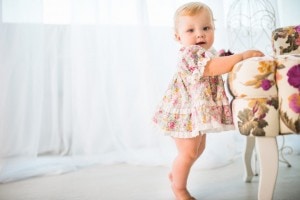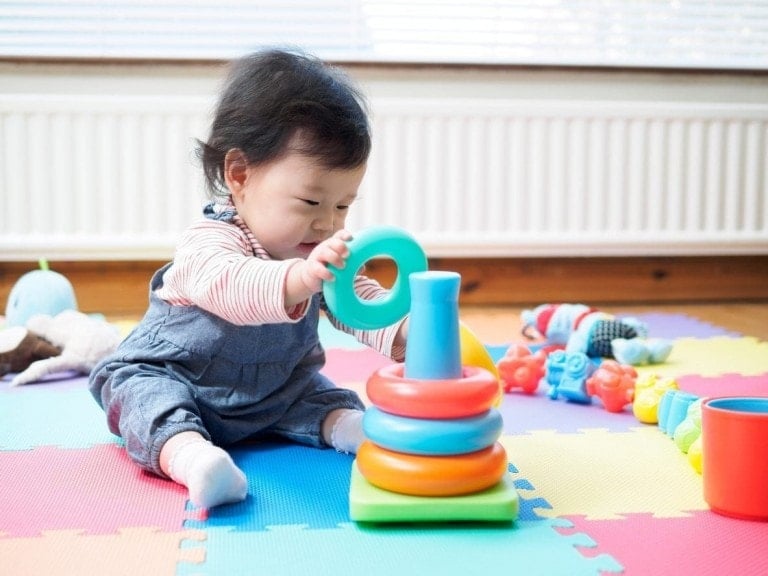Believe it or not, babies communicate with us from the moment they’re born, and I’m not just referring to crying. Babies use sounds, facial expressions, and movements to tell us how they feel.3 Even 2-pound premature babies in the neonatal intensive care unit are beginning to communicate.4,5 Of course, babies this young aren’t communicating with intention or using “intentional communication.” However, they are using “reflexive communication.”6
Reflexive and Intentional Communication
Reflexive communication is involuntary movements, sounds, or facial expressions in response to pleasure or discomfort. To let us know when they need a break, babies typically show signs of overstimulation or stress in their body movements and bodily functions.6,7
Signs of stress in a newborn baby include extending their arms and splaying their fingers, holding their legs out straight, arching their back, and turning their head away. Some more discreet signs of stress include excessive hiccupping, yawning, or sneezing.4,5,7 These are ways babies tell us they need some time to regroup. Even if your baby isn’t crying, they may be trying to send you cues that they need a break from all the action.4,5,7 If you see two or three of these signs at once, you might swaddle your baby.4,8 Also, hold them close so they can feel safe and calm again like they felt in the womb.8
By approximately 6 weeks old, babies begin to smile in response to pleasure and connection with others. When younger babies seem to smile, it’s usually just a grimace. However, babies can recognize pleasure and respond to it intentionally by 6 weeks.9 By 3 to 4 months old, babies are typically laughing out loud.10 You can try to make your baby laugh every day! Just like adults, laughing releases endorphins in babies, boosting their mood.11
Usually, by 6 months, babies begin to babble, producing more complex sounds.12 This is the beginning of intentional communication. Parents must respond to their baby’s communication to start the back-and-forth, which is so important for early development.3,6,13 A 2015 study from Harvard and MIT found that the back-and-forth interactions between babies and caregivers are the strongest predictor of future language and academic skills.1 So, keep those interactions going all day long!
Be Responsive to Your Baby’s Communication
What are they looking at, reaching for, and showing interest in? Allow them to touch what interests them, then talk about it. Ask them what it feels like, explain what it is, and demonstrate how it’s used. This will encourage their natural-born sense of curiosity and wonder and lay the foundation for new exploration, building those important brain cells.14
By as early as 5 months old, babies learn that their babbles elicit a response from their parents and caregivers. This is significant because they know that their sounds have a social effect.15 By 6 months, babies can typically follow mommy or daddy’s gaze and take an interest in whatever their parent is looking at. This is an important skill in communication, cognition, and behavior.16,17 Exercising this skill helps babies learn social referencing, which is the ability to look to parents for information on interpreting situations.18 Some studies have even found that gaze-following at 10 months predicts children’s vocabularies at 2 years old.2
The Bottom Line
Simply by following your baby’s lead and showing interest in what they’re interested in, you’re helping them learn about their world and building important brain connections. So, keep responding to their cues and engaging with them, whether that means verbally responding to their communication, playing with them, swaddling them, etc. You’ll build a closer bond with your little one by staying in tune with them!3
